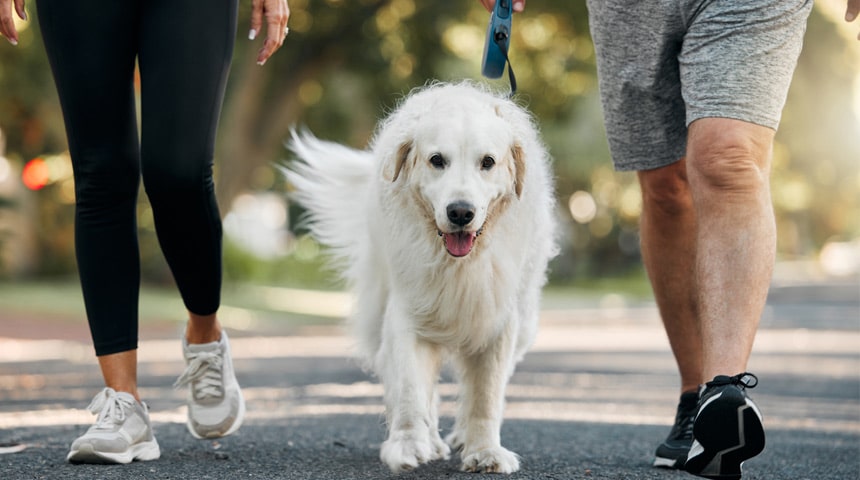
Osteoarthritis is a condition that occurs in animals of all species, particularly for older or large breed animals. It consists of an irreversible degradation of the cartilage of the joints. This disease is painful and requires special care. Here are some tips for caring for your dog with osteoarthritis:
Ensuring a Healthy Weight
Being overweight predisposes dogs to develop osteoarthritis. It is also essential for dogs already affected by osteoarthritis to maintain a healthy weight to reduce pain, symptoms and the progression of the condition.
Having Regular Veterinary Exams
It is very important to detect early signs of osteoarthritis in your dog. To do so, have your dog examined regularly by your veterinarian. For dogs that already have osteoarthritis, it is just as important to having them examined to follow the evolution of their disease, adjust the therapeutic approach and reduce your dog's pain.
Diet
Diet is an important factor in weight control. Good quality food suited to the nutritional needs of your dog will help maintain good health. It is also a good way to control your dog's weight. Some foods are also designed specifically for dogs with osteoarthritis. Consult your veterinary team for a nutritional recommendation.
Treatment
There is no cure, as this condition is irreversible. However, it is important to reduce pain with medical treatments prescribed by your veterinarian. There are also supplements to maintain good joint health.
Physical Activity
Maintaining moderate but regular physical activity will allow your dog to maintain good muscle mass and avoid damaging their joints. You should also provide your dog with enough rest in a comfortable place to relieve the joints during the day.
Adapting the Environment
Try to reduce unnecessary movements for your dogs, for example by reducing the number of steps to climb between their food and their rest area. Provide outdoor access without steps for dogs. The goal is to reduce intense effort on stairs or heights.
Preventing Pests
Pets that go outdoors are exposed to a number of parasites. Lyme disease is caused by the transmission of a bacterium (Borrelia burgdorferi) by certain ticks (Ixodes scapularis) and often causes polyarthritis and signs of lameness. Administering parasite prevention treatment prescribed by your veterinarian will reduce the risk of infection. There is also a Lyme disease vaccine for dogs.

